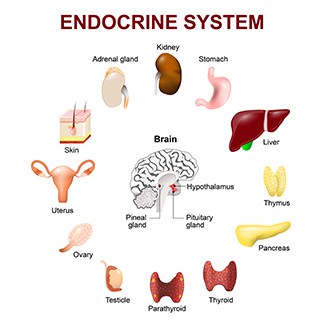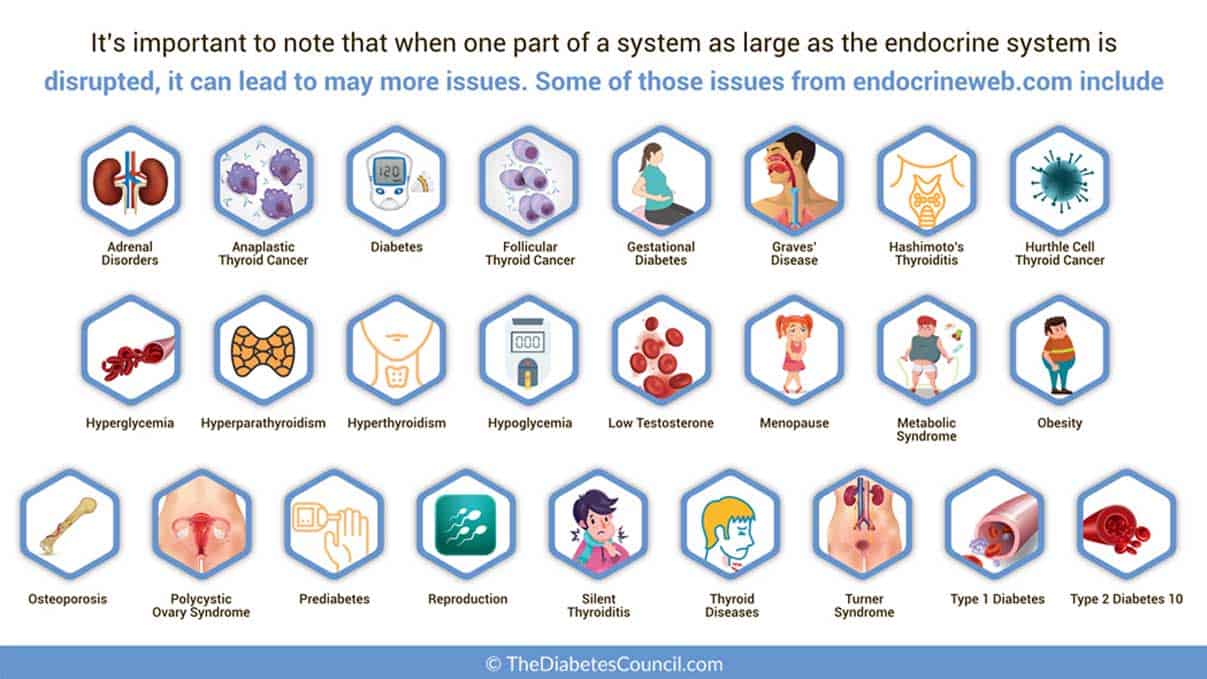In this article, we will look at how our genes play a factor in Type 2 Diabetes. All cannot be blamed on our family genes, but rather on factors unknown in the environment that may be affecting how our genes manifest themselves in our endocrine system from inside our cells, along with our genetics.
We won’t get too deep into the technical terms of DNA, and factors related to mutations, which tend to take a line of text to describe. Rather, we will look at it in terms that we all can understand. It’s science that’s worth explaining in basic terms in order to have insight into Type 2 Diabetes. Let’s first look at what epigenetics is. Since it’s a bit complicated, bear with me.
Contents
What is epigenetics?
Epigenetics is the science of showing how genes express themselves based on properties outside the human body. Specifically, a broad range of environmental and other factors underlie the process by which genes behave. Lately, these processes are believed by scientists to contribute to the pathological process in genes that leads to Type 2 Diabetes and other diseases.
Some of the issues that impact epigenetics include endocrine disruptor issues that affect fertility in both men and women, fetal development at various stages of development, and rates of cancer, gastrointestinal issues, cardiovascular issues, including heart disease from excessively high cholesterol rates; and the list goes on.
Scientists believe that if they can pin point gene expressions in people with Type 2 Diabetes, it may lead them to the causes of the condition that have previously been hidden. It could also unlock clues to other diseases that are sometimes the complications of diabetes (i.e., cardiovascular disease).
With the rate of diabetes expected to increase twofold by 2020, this is an area where we are seeing many research studies being conducted. It is not so easily explained by overweight and sedentary lifestyle behaviors, nor improper diet. Not everyone with these characteristics get diabetes.
It seems an infinitely complex maze, interweaving genetics and environment, where no single factor is responsible. There are still many studies that need to be conducted which will look at the role of epigenetics in Type 2 Diabetes, which accounts for approximately 90 percent of all diabetes cases in the U.S.
The complex metabolic processes that occur in Type 2 Diabetes that result in high blood sugar levels, a dysfunctional pancreas, and resistance to insulin in muscles and tissues, and in the liver, contributes to debilitating and costly complications. Heart disease, stroke, blindness, need for kidney dialysis or transplant, and loss of limbs are just some of the physical, emotional and financial burdens of diabetes. 1
I recommend reading the following articles:
How epigenetics is influenced by the environment
Type 2 Diabetes has a strong genetic component, as it tends to run in families, but environment also has a significant role in triggering this condition, and apparently triggering genes to change their behaviors. The interplay with environmental factors such as pollution, pesticides, radiation and other factors cannot be discounted, although it’s poorly understood.
As we watch scientists consider this connection, we will hopefully come out on the better end of understanding the complex endocrine dysfunctions that characterize Type 2 Diabetes. In the process, epigenetics study helps scientist to understand the complex processes of disease, as more and more chemical contaminants are released by big corporations, from farm runoff wastes and pesticides, and from many other sources.
Airborne contaminants become a risk to health, as Teflon and plastic byproducts float into other regions far away from areas of original contamination, airborne possibly by wind or trafficked by insects and bees. The news is filled with environmental stories, from officials in Flint being charged with manslaughter for not dealing with lead levels, to the New York Time’s report that if you live in America you have one in four chances of living in an area where there is unsafe drinking water. 2
How genes change to gear toward disease and Type 2 Diabetes
Our genes change based on our environment. Through various pathways that play into DNA and Chromatin within the gene, the same gene can take on the properties of a much different gene, and work to influence and switch responses in the endocrine system. Phenotype then, is different and influenced by epigenome and genome.
For a visual of this impostor gene strategy, imagine a set of identical twins. Though they look the same, they behave very differently. In this way, you can tell them apart. One may be more compliant to the mother’s wishes, while the other twin wreaks havoc on the household.
One thing that seems to influence gene “personality,” if you will, from our twin analogy, is the role of modification of Histones. These proteins are the base by which DNA forms around to make “nucleosomes.” These are the nuclei of the genome.
When histone properties are changed, the function is also changed. This changes the way genes function inside the cells. These changes can over time lead to disease.
New studies are helping scientists to identify new genes that could be partially causative for Type 2 Diabetes. Only time will tell what they may find in their studies. We will look at the studies that have been done to date, and what the findings were for those.
So far, researchers have found three genes that were found to be associated with Type 2 Diabetes. Similar studies currently being conducted are considering other genes that may be associated with the development of this chronic condition. They hope to come up with all the genes associated with Type 2 Diabetes before they are through.
For now, research scientists do know that Type 2 Diabetes can have genetic components, and that other factors besides genetics do play an important role in the development of this endocrine system condition.
Role of the environment in the development of Type 2 Diabetes
Since we know that some genes have been identified as precursors to Type 2 Diabetes, we should now look at what environmental factors may weave the complex web that is T2D. Different environmental triggers alter genes through “DNA methylation” or histones. The DNA is altered at the chromatin level, which results in the gene “behaving” differently.
What environmental factors can cause genes to misbehave?
When you are in your mother’s womb, deficient vitamins, cigarette smoke, pollution, and factors such as exposure to lead or other metals can affect your epigenome. Additionally, as we age, our genes are altered, and as we become overweight, this inflammatory process causes changes in our genes that can trigger Type 2 Diabetes.
Could Teflon-like chemicals that were dumped in rivers and made airborne cause your Type 2 Diabetes?
Common chemicals are also implicated. This one is interesting because we now drink reverse osmosis water in my neighborhood. This is due to contamination from the chemical GenX and other emerging chemicals that were dumped into the Cape Fear River by a company, Chemours, in Fayetteville, North Carolina. The region that covers a five-county area has also seen wells affected, airborne GenX and PCOS’s, as well as a high count of GenX found in a batch of local honey in Bladen County, North Carolina.
GenX
One of the main effects of the chemicals, as reported by our news stations and experts in this area, are endocrine effects. Other such effects reported are cancer, thyroid disease and gastrointestinal diseases, such as ulcerative colitis. Another interesting effect of GenX chemicals in mice has been the development of obesity, and extremely high levels of cholesterol.
GenX was produced to replace another harmful and cancer-causing chemical made by DuPont called Nafion. It just turned out that GenX was just as dangerous to the endocrine system as its cousin Nafion.
The company Chemours, that split from DuPont, has also had spills in the Netherlands, and DuPont has been responsible for causing contamination related to its Teflon chemicals in other states in America.
DuPont rents space in the Fayetteville Works plant, along with another company, Kuraray America, just up the river from me. There have been, to date, 24 Teflon-like chemicals and contaminants found just upstream from me here in North Carolina.
It's interesting that in my county in Eastern North Carolina, we also experience a higher than average rate of Type 2 Diabetes. Heart disease, high cholesterol and high blood pressure are also higher than the state average for North Carolina. This would make for an interesting research study; one that could shed light into the ability of these chemicals to alter genes, and cause disease, if only partially.
BPA
The first endocrine disruptive chemical you may have heard also about breast cancer is BPA (Bisphenol A). This chemical is found in various products used in making plastics. BPA has also been linked to Type 2 Diabetes and cardiovascular disease.
This is in part why you see so many products that proport being “BPA free” on the market.
Phthalates
Phthalates, another culprit, are also in the category of endocrine disruptors. A soft plastic found in many products, they have been linked to health issues that include Type 2 Diabetes, Attention Deficit Hyperactivity Disorder, Asthma and obstructive airway diseases, diseases along the autistic spectrum and even fertility issues in men.
On top of all of that, these chemicals may also contribute to the rate of obesity. In one study, Phthalates tend to increase fat storage before we are born. If exposed in utero, the chemical affects a fetus during development, setting it up with five times the fat accumulation that is normal later in life.
Somehow, Phthalates upset the delicate balance of epigenetics, by causing stem cells in the study to take on fat tissue, and become essentially obese.
BBP
BBP has also been used in various products in the United States and the European Union. While it is now banned in the EU, its uses are very limited.
Looking at the link between chemicals introduced into our environment and obesity and Type 2 Diabetes epidemics in the United States, having some studies show that these chemicals do cause genetic response of fat uptake at the cellular level sheds new light.
Especially since we have historically looked at overweight and obesity as a modifiable condition, treated with diet and exercise.
Still, the entire process is complex, and no one factor seems to explain it all. The small tidbits of information scientists find may one day unlock the mystery to obesity and Type 2 Diabetes. These are just some of the plastics that get into our water, are hard to remove, build up in your system and cause endocrine disruptions.
There are many more chemicals, though we will not get into every environmental contaminant that could be affecting your endocrine system here. 4
Epigenetics of diabetes
In study after study, the role of epigenetics in the development of Type 2 Diabetes, and other diseases has been replicated, and there is a direct connection. However, epigenetics is not the only reason for endocrine function disruption. It’s based on a combination of genetic mutations related to the environment, contaminants in it, and how the person is exposed to contaminants.
Further studies are being done to learn the role that genes and changes in genes play in the development of cancers, arthritis, high blood pressure, and asthma and other obstructive airway diseases. Clearly, more research is coming, and there are many research projects in the works currently.
As more research is being done in these areas, there are also studies being done in the area of Type 2 Diabetes, as pancreatic islet cells respond to changes in genes with increased insulin resistance, and endocrine cells seem especially sensitive to our current environmental contaminants.
Epigenetic changes in patients with type 2 diabetes
Though we know that epigenetics plays an important role in the development of Type 2 Diabetes, we are unsure what that particular role is. From the National Institute of Health study on epigenetics, we find this:
“Increasing evidence suggests that epigenetic factors may regulate the complex interplay between genes and the environment and affect human diseases such as diabetes and its complications.
Clinical trials have underscored the long lasting beneficial effects of strict glycemic control for reducing the progression of diabetic complications. They have also demonstrated that diabetic complications such as diabetic nephropathy, a chronic kidney disorder, can continue even after blood glucose normalization, suggesting a metabolic memory of the prior glycemic state.
Recommended reading:
Dysregulation of epigenetic post-transcriptional modifications of histones in chromatin, including histone lysine methylation, has been implicated in aberrant gene regulation associated with the pathology of diabetes and its complications.
Genome wide studies have demonstrated cell-type specific changes in histone methylation patterns under diabetic conditions. In addition, studies in vascular cells have shown long lasting changes in epigenetic modifications at key inflammatory gene promoters after prior exposure to diabetic conditions suggesting a possible mechanism for metabolic memory.
Recent studies have demonstrated roles for histone methylation, DNA methylation, as well as microRNAs in diabetic nephropathy. Whether these epigenetic factors play a role in metabolic memory of diabetic kidney disease is less well understood.” (https://www.ncbi.nlm.nih.gov/pmc/articles/PMC3123432/)
Epigenetic changes associated with diabetic complications
There is growing evidence that epigenetics plays a role in the way genes interact with the environment. There are increasing signs that epigenetics plays a role in the development of Type 2 Diabetes, and also contributes to the complications of diabetes. We know that once blood sugars are stabilized, there are still complications of diabetes such as nerve damage, kidney disease, cardiovascular disease and diseases affecting every system in the human body.
From the National Institute of Health (NIH), the current research reads:
“Epigenetic changes associated with type 2 diabetes are therefore still poorly understood. Nevertheless, epigenetics may play an important role in the growing incidence of type 2 diabetes, and over the next few years, it will be a great challenge to dissect the role of histone modifications and DNA methylation in the pathogenesis of the disease and its complications.
Two additional important questions are whether the epigenetic changes induced by today's sedentary lifestyle can be inherited by coming generations and whether these changes are reversible.” (https://www.ncbi.nlm.nih.gov/pmc/articles/PMC2780862/ )
Do Epigenetic Changes Affect the Endocrine System?
Epigenetic changes have been known to affect the endocrine system, and are a factor in the development of diabetes, and other health issues. It is by the process of evolution that genes change, and adapt to changing environments, or mutate into disease.
In 2006, researchers at the University of Texas studied the interaction of epigenetics, the endocrine system and evolution on health and the manifestation of diseases.
They noted that endocrine disrupting chemicals in the environment are linked to disease and overall health in human beings, and that chemicals in the environment that take on the properties of the hormone estrogen can cause physical and mental developmental issues when exposed to at early ages, or in development. Clearly, there are issues with man-made chemicals introduced into our environment. 5
Further reading:
Can Epigenetic Changes Be Reversed?
Once the behavior of your genes is altered, they can’t be reversed back to the way they were before. Therefore, it becomes a permanent change that can also be passed down for generations to come. This brings the question of what things in our environment caused our ancestors to develop diseases and pass them on to offspring.
Where do we go from here?
As words such as “evidenced based” and “science-based” are erased from the current Centers for Disease control’s vocabulary, it will be interesting to see how much funding is set forth for the study of epigenetics. It is an important issue that needs to be further studied with relationship to diseases, and particularly for our purposes here, Type 2 Diabetes.
It’s important to note that when one part of a system as large as the endocrine system is disrupted, it can lead to may more issues.
Some of those issues from endocrineweb.com include:
- Adrenal Disorders
- Anaplastic Thyroid Cancer
- Diabetes
- Follicular Thyroid Cancer
- Gestational Diabetes
- Graves' Disease
- Hashimoto's Thyroiditis
- Hurthle Cell Thyroid Cancer
- Hyperglycemia
- Hyperparathyroidism
- Hyperthyroidism
- Hypoglycemia
- Low Testosterone
- Menopause
- Metabolic Syndrome
- Obesity
- Osteoporosis
- Polycystic Ovary Syndrome
- Prediabetes
- Reproduction
- Silent Thyroiditis
- Thyroid Diseases
- Turner Syndrome
- Type 1 Diabetes
- Type 2 Diabetes 10
Over to you
What do you think about the role that your genes and your environment may have played in the development of your Type 2 Diabetes? Do you believe that there is a link? Do you have water, air and environmental health quality issues in your area or region? Do you feel that they may have in some way affected your health?
What do you feel are solutions to our environmental issues that may be affecting the overall health of the nation, and possibly even the rate at which Type 2 Diabetes is rising, along with other endocrine disorders and diseases? Are we overreaching here? Start your discussion in our comments box below. We welcome respectful debate on all sides. Hope this gives you more information of diabetes type 2.
TheDiabetesCouncil Article | Reviewed by Dr. Christine Traxler MD on May 27, 2020
References
- https://www.whatisepigenetics.com/type-2-diabetes-mellitus-and-epigenetics/
- https://www.nytimes.com/2017/05/04/us/tapwater-drinking-water-study.html?_r=0
- https://www.usatoday.com/story/news/2017/08/14/63-million-americans-exposed-unsafe-drinking-water/564278001/
- https://www.whatisepigenetics.com/could-common-chemicals-tip-the-epigenetic-balance-and-program-someone-for-obesity/
- https://www.ncbi.nlm.nih.gov/pubmed/16690812
- https://www.ncbi.nlm.nih.gov/pmc/articles/PMC5026264/
- http://www.diabetesandenvironment.org/home/mech/genes
- http://circres.ahajournals.org/content/118/11/1706
- https://www.ncbi.nlm.nih.gov/pmc/articles/PMC4207047/
- https://www.endocrineweb.com/conditions











